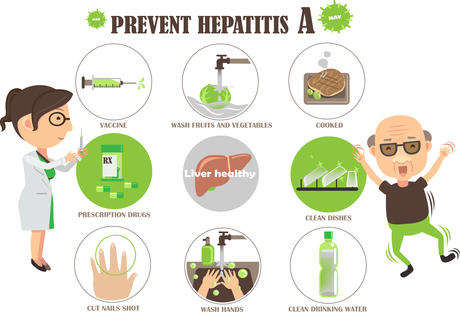Hepatitis A and the foodservice industry

Hepatitis A is the only common vaccine-preventable foodborne disease. Should food service workers be vaccinated to minimise the risks of them contaminating the foods they handle?
Hepatitis A is a viral infection affecting the liver that spreads through the faecal-oral route. While the virus is endemic in the third world, the hygiene and sanitation practices in the developed world mean that most people in Australia and New Zealand reach adulthood without having been exposed to the virus.
According to the Hepatitis Australia website: “Infection resulting from contaminated food or water, or an infected food handler is rare in Australia.” However, infection via this route is certainly not unknown. Only last year, berries sourced from China and Chile and repackaged at Patties Foods’ Victorian facility were implicated for causing a hepatitis A outbreak and in New Zealand Fruzio Mixed Berries were recalled due to hepatitis A contamination. Now, in the US, frozen strawberries from Egypt have sickened at least 140.
And it is not only frozen berries that have been the source of hepatitis A outbreaks.
- Five died, one required a liver transplant and 500 were sickened by green onions imported from Mexico in 2003.
- 165 were sickened by frozen pomegranates from Turkey.
- Epidemiological and laboratory findings suggest a sweet pastry salesperson contaminated products while packing and selling them in Lower Saxony, sickening 83.
- 10 cases of epidemiologically linked hepatitis A involved a food handler at a ready-to-eat foods cafe in Melbourne.
Bill Marler, managing partner of Marler Clark, a Seattle, Washington, based law firm that specialises in foodborne illness cases, is advocating that foodservice workers should be vaccinated against hepatitis A.
Being resistant to heating and freezing, the hepatitis A virus can survive for several hours outside the body and persists on the hands and in food for even longer. Compounding this is the problem that those with the disease are infectious for about two weeks before they develop any symptoms. So they can be handling food and spreading the disease before they are aware that they are infected. In fact it takes 15–50 days for symptoms of hepatitis A to show after infection (average time 28–30 days).
The world is no longer a large place. More and more foods are shipped around the globe, many from developing countries, and people are also travelling internationally to an extent never before seen. It is easy to pick up hepatitis A when travelling to less developed countries, come home, go back to work in the food industry and contaminate a lot of food before you develop symptoms.
Vaccination for hepatitis A is two injections and there are very few side effects — possibly a redness on the injection site or a mild fever. The Australian Immunisation Handbook (NHMRC 2008) recommends hepatitis A vaccinations for:
- travellers to endemic areas, which means developing countries;
- all Aboriginal and Torres Strait Islander children between 18 months and six years of age in north Queensland;
- workers in rural and remote Indigenous communities;
- child day-care and pre-school personnel;
- the intellectually disabled and their carers;
- healthcare workers employed in paediatric wards, intensive care units and emergency departments that provide for substantial populations of Aboriginal and Torres Strait Islander children and nursing and medical staff on rural and remote Indigenous communities;
- sewage workers;
- men who have sex with men;
- injecting drug users;
- patients with chronic liver disease of any aetiology; and
- patients with haemophilia who may receive pooled plasma concentrates.
As many prepared meal manufacturers’ clients are among the most vulnerable in society already, I’m inclined to agree with Bill Marler — vaccination should be the go.
What's new on the shelf
From classic reinspired ice cream to West African flavours in a jar and whiskey aged in a gaol,...
What's new: six on the shelf
From classic chocolatey flavours reinspired to Korean delicacies, have a look at what's new...
What's new on the shelf?
From Aussie/American fusion-inspired hot sauce to a canned protein drink for gamers, have a look...













